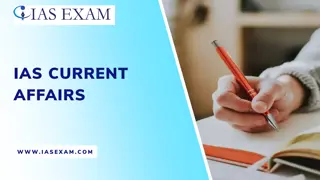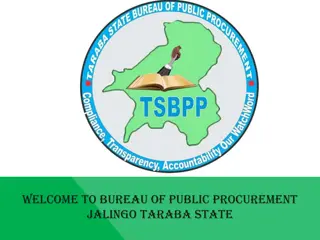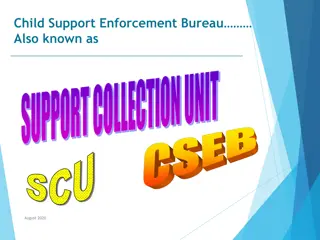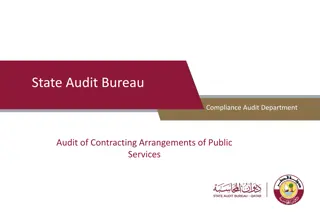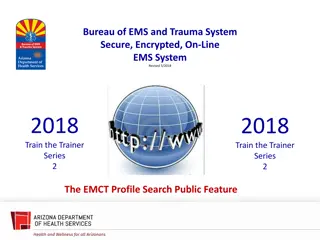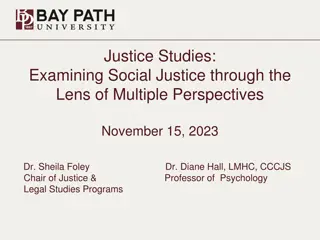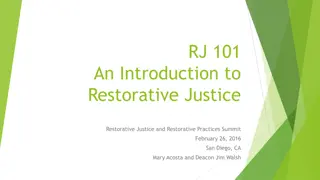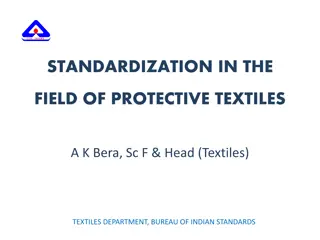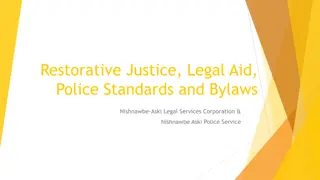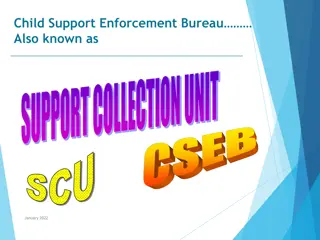Bureau of Indian Affairs Office of Justice Services
The Bureau of Indian Affairs Office of Justice Services, along with the Office of Tribal Justice Support, plays a crucial role in supporting Tribal Justice systems across various Native American tribes in the United States. They provide assistance in areas such as criminal law, diversion and re-entry programs, court reviews, and budget coordination. Additionally, they work on initiatives like the Model Indian Juvenile Code and VAWA Training to enhance tribal justice frameworks.
Download Presentation

Please find below an Image/Link to download the presentation.
The content on the website is provided AS IS for your information and personal use only. It may not be sold, licensed, or shared on other websites without obtaining consent from the author.If you encounter any issues during the download, it is possible that the publisher has removed the file from their server.
You are allowed to download the files provided on this website for personal or commercial use, subject to the condition that they are used lawfully. All files are the property of their respective owners.
The content on the website is provided AS IS for your information and personal use only. It may not be sold, licensed, or shared on other websites without obtaining consent from the author.
E N D
Presentation Transcript
Bureau of Indian Affairs Office of Justice Services Office of Tribal Justice Support
Tribal Justice Support Associate Director-Tricia Tingle 202-208-5787 Deputy Associate Director, Criminal Law Specialist -Natasha Anderson Deputy Associate Director, Diversion and Re- entry Tribal Justice Support- Rodney Robinson Civil Law Specialist - Katherine Scotta National Coordinator for Court Reviews-Open
Tribal Justice Support Budget Coordinator-Simone Toya 505-563-3763 Administrative Coordinator for Court Reviews- Savannah Joe Law Enforcement Administrator- Wanda Brunson
Active Tribal Justice Systems TOTAL # of Tribes = 566 TOTAL # of TRIBAL COURTS = 314 (308 without some specialty courts)
VAWA Training VAWA Training- Each of the 5 VAWA Pilot Tribes will host a VAWA Training funded through the BIA, and specific appropriations for VAWA Training for Tribes. Tulalip September 2-4, 2015 Fort Peck-Late Fall 2015 or Early Spring 2016, in conjunction with the USAO Sisseton-Wahpeton-Early Spring 2016
The 2015 Model Indian Juvenile Code Sample juvenile code to assist tribal governments as a tool in creating or revising their juvenile codes. 25 years ago, the BIA contracted with the National Indian Justice Center to develop the first Code in 1988 after the passage Public Law 99-570, title IV, 4221, which required the creation of a Model Indian Juvenile Code (25 U.S.C. 2454). Tribal Law and Order Act of 2010, a Memorandum of Agreement between DOI, DOJ, and DHHS was developed to establish a framework for collaboration that results in the coordination of resources and programs. 25 U.S.C. 2454 and the Model Indian Juvenile Code. .
Model Juvenile Code contd Juveniles Rights; and Keeping Tribal Youth Out Of Jail And In The Community The 2015 Model Juvenile Code is divided into three categories: 1) Delinquency; 2) Child in Need of Services; and 3) Truancy. The 2015 Model Juvenile Code focuses on several principles including, but not limited to: Right to Counsel for Each Child Brought Into the Juvenile Justice System; Right to Counsel for Parents; Preference for Alternatives to Secure Detention; and Numerous Opportunities to Divert Cases Out of Adversarial Process and into Traditional Forums as preferred by a particular Tribal Community.
Additional Components of TJS Child Welfare Training designed for Social Workers and Tribal Court Personnel Alaska Code Development Tribal Court Advocacy Training VAWA-Special AUSA training and PD training Completed a total of 41 Tribal Court Assessments One time year end funding
Reorganizational Chart Billings Aberdeen Minneapolis Portland Nashville Sacramento Phoenix Albuquerque Muskogee
Contact Information Tricia A. Tingle Associate Director- Office of Tribal Justice Support Tricia.Tingle@BIA.GOV 202-208-2675


